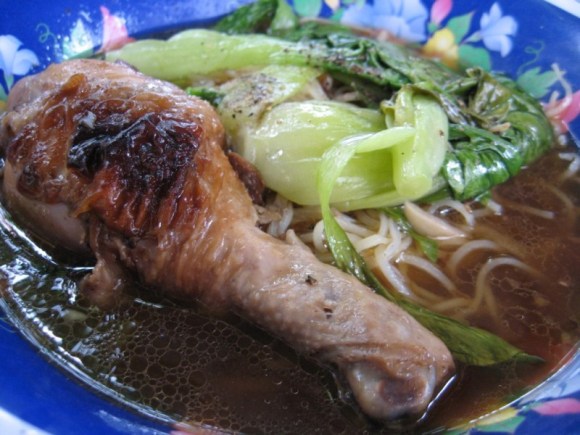Transglutaminases are a family of enzymes (EC 2.3.2.13) that catalyze the formation of a covalent bond between a free amine group (e.g., protein- or peptide-bound lysine) and the gamma-carboxamide group of protein– or peptide-bound glutamine. Bonds formed by transglutaminase exhibit high resistance to proteolytic degradation.
Transglutaminases were first described in 1959.[1] The exact biochemical activity of transglutaminases was discovered in blood coagulation protein factor XIII in 1968
Thickening agents, or
thickeners, is the term applied to substances which increase the
viscosity of a solution or liquid/solid mixture without substantially modifying its other properties; although most frequently applied to foods where the target property is
taste, the term also is applicable to
paints,
inks,
explosives, etc. Thickeners may also improve the
suspension of other ingredients or
emulsions which increases the stability of the product. Thickening agents are often regulated as
food additives and as
cosmetics and
personal hygiene product ingredients. Some thickening agents are
gelling agents, forming a
gel, dissolving in the liquid phase as a
colloid mixture that forms a weakly cohesive internal structure. Others act as mechanical
thixotropic additives with discrete particles adhering or interlocking to resist
strain.
Food thickeners frequently are based on either Polysaccharides (starches, vegetable gums, and pectin), or proteins. A flavorless powdered starch used for this purpose is a fecula (from the Latin faecula, diminutive of faex meaning “dregs”). This category includes starches as arrowroot, cornstarch, katakuri starch, potato starch, sago, tapioca and their starch derivatives. Vegetable gums used as food thickeners include alginin, guar gum, locust bean gum, and xanthan gum. Proteins used as food thickeners include collagen, egg whites, furcellaran, and gelatin. Sugars include agar and carrageenan. Other thickening agents act on the proteins already present in a food. One example is sodium pyrophosphate, which acts on casein in milk during the preparation of instant pudding.
Different thickeners may be more or less suitable in a given application, due to differences in taste, clarity, and their responses to chemical and physical conditions. For example, for acidic foods, arrowroot is a better choice than cornstarch, which loses thickening potency in acidic mixtures. At (acidic) pH levels below 4.5, guar gum has sharply reduced aqueous solubility, thus also reducing its thickening capability. If the food is to be frozen, tapioca or arrowroot are preferable over cornstarch, which becomes spongy when frozen.
Many other food ingredients are used as thickeners, usually in the final stages of preparation of specific foods. These thickeners have a flavor and are not markedly stable, thus are not suitable for general use. However, they are very convenient and effective, and hence are widely used.
Functional flours are produced from specific cereal variety (wheat, maize, rice or other) conjugated to specific heat treatment able to increase stability, consistency and general functionalities. These functional flours are resistance to industrial stresses such as acidic pH, sterilisation, freeze conditions, and can help food industries to formulate with natural ingredients. For the final consumer, these ingredients are more accepted because they are shown as “flour” in the ingredient list.
Flour is often used for thickening gravies, gumbos, and stews. It must be cooked in thoroughly to avoid the taste of uncooked flour. Roux, a mixture of flour and fat (usually butter) cooked into a paste, is used for gravies, sauces and stews. Cereal grains (oatmeal, couscous, farina, etc.) are used to thicken soups. Yogurt is popular in Eastern Europe and Middle East for thickening soups. Soups can also be thickened by adding grated starchy vegetables before cooking, though these will add their own flavour. Tomato puree also adds thickness as well as flavour. Egg yolks are a traditional sauce thickener in professional cooking; they have rich flavor and offer a velvety smooth texture but achieve the desired thickening effect only in a narrow temperature range. Overheating easily ruins such a sauce, which can make egg yolk difficult to use as a thickener for amateur cooks. Other thickeners used by cooks are nuts (including rehan) or glaces made of meat or fish.
Many thickening agents require extra care in cooking. Some starches lose their thickening quality when cooked for too long or at too high a temperature; on the other hand, cooking starches too short or not hot enough might lead to an unpleasant starchy taste or cause water to seep out of the finished product after cooling. Also, higher viscosity causes foods to burn more easily during cooking. As an alternative to adding more thickener, recipes may call for reduction of the food’s water content by lengthy simmering. When cooking, it is generally better to add thickener cautiously; if over-thickened, more water may be added but loss of flavour and texture may result.
Gelling agents are food additives used to thicken and stabilize various foods, like jellies, desserts and candies. The agents provide the foods with texture through formation of a gel. Some stabilizers and thickening agents are gelling agents.
Typical gelling agents include natural gums, starches, pectins, agar-agar and gelatin. Often they are based on polysaccharides or proteins.
Examples are:
Commercial jellies used in East Asian cuisines include the glucomannan polysaccharide gum used to make “lychee cups” from the konjac plant, and aiyu or ice jelly from the Ficus pumila climbing fig plant.
Food thickening can be important for people facing medical issues with chewing or swallowing, as foods with a thicker consistency can reduce the chances of choking, or of inhalation of liquids or food particles, which can lead to aspiration pneumonia.

